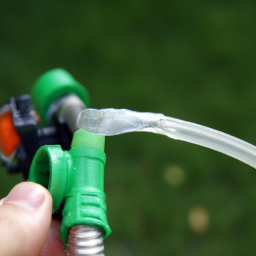How To Syphon Gas Using A Garden Hose
How To Syphon Gas With A Garden Hose
How to Syphon Gas With a Garden Hose
Gasoline theft and illegal siphoning is a crime punishable by substantial fines and imprisonment in most jurisdictions. This article will explain the legal ways of transferring gasoline between vessels using a specialized device known as a garden hose with a siphon function. It is important to take the necessary precautions while handling gasoline and never attempt to syphon out full tanks of gasoline without applicable safety equipment.
Overview of a Garden Hose Syphon
A garden hose with a siphon feature was designed to safely transfer gasoline from one fuel reservoir to another. It typically consists of two rubber tubes, one for a source and one for a destination container. The source container is typically the gas tank while the destination is the jerry can. The inlet tube is placed in the source base, and the outlet hose is placed in the recipient tank. Siphoning the gasoline creates a vacuum to enable the flow of liquid.
Ensuring Quality Control
When syphoning gasoline with a garden hose, it is important to ensure the quality of the fuel by performing a gas quality check. First, check for the proper amount of octane level in the fuel this will determine the overall performance and the expected fuel efficiency in the engine. Second, check for the presence of water droplets or contaminants within the gasoline this helps to ensure that there are no fuel grade disruptors present.
Use Specialized Equipment for Safer Procedures
Using specialized equipment such as a funnel is always recommended when transferring liquids such as fuel. Funnels are cheap and made from simple plastic or rubber. They make the process of transferring fuel from one vessel to another much easier and safer. Additionally, always make sure that it is not near any open flames or heat sources, as these can easily ignite and cause serious injury or property damage.
Protect Yourself With Appropriate Clothing and Gear
When transferring or manipulating gasoline, always make sure to wear appropriate protective clothing and gear. This includes a face mask, gloves, overalls, safety goggles, and other necessary protective equipment. Always avoid any direct contact with gasoline or its fumes, as it can cause chemical burns or irritation to the skin, lungs, and eyes. Finally, make sure to keep flammable materials away from any fuel source, as they can easily ignite and cause injury or property loss.
In Summary
Manipulating gasoline with a garden hose involves adhering to strict safety protocol. Using the appropriate protective gear and funnel is always highly recommended. Additionally, checking for the proper amount of octane level in the fuel and the presence of contaminants is extremely important for quality control. Taking these steps will help ensure the safest and most efficient syphoning of gasoline.

Previous Page
